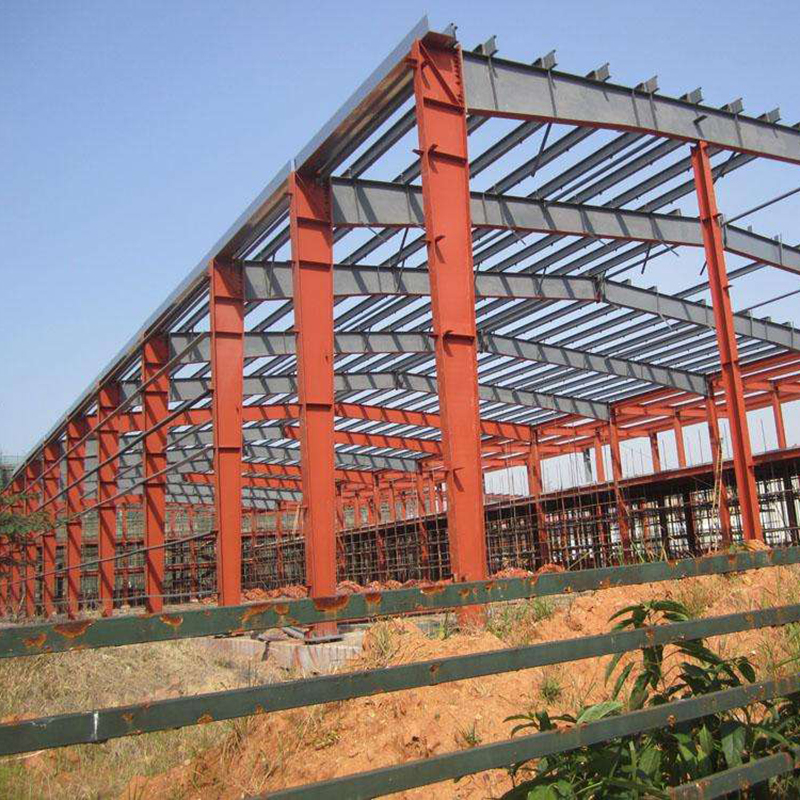There are three connection methods of steel structure: weld connection, bolt connection and rivet connection.
(1) weld connection
Weld connection is to make the welding rod and weldment melt locally through the heat generated by the arc, and then condense into weld after cooling, so as to connect the weldment into a whole.
Advantages: no weakening of component section, steel saving, simple structure, convenient manufacturing, large connection stiffness, good sealing performance, easy to use automatic operation under certain conditions, high production efficiency.
Disadvantages: the heat affected zone of the steel near the weld due to the high temperature of welding may be the material embrittlement of some parts; during the welding process, the steel is subject to the high temperature and cooling with uneven distribution, resulting in the welding residual stress and deformation of the structure, which has a certain impact on the bearing capacity, stiffness and use performance of the structure; due to the large rigidity of the welded structure, the local cracks are easy to expand once they occur.As a whole, especially at low temperature, brittle fracture is easy to occur; the plasticity and toughness of the weld joint are poor, and defects may occur during welding, which reduces the fatigue strength.
(2) bolt connection
Bolt connection is through the bolt this kind of fastener to connect the connector into a whole.There are two types of bolt connection: ordinary bolt connection and high-strength bolt connection.
Advantages: the construction process is simple and the installation is convenient. It is especially suitable for the installation and connection at the construction site, as well as the disassembly. It is suitable for the installation and removal of structures and temporary connections.
Disadvantages: holes need to be drilled and assembled on the plate to increase the manufacturing workload and the accuracy of manufacturing; bolt holes also weaken the cross-section of the component, and the connected parts often need to overlap each other or add auxiliary connecting plates (or angle steel), so the structure is more complex and expensive steel.
(3) rivet connection
Rivet connection is to insert a rivet with a semicircular prefabricated rivet head at one end into the rivet hole of the connector after the rivet rod is burned red, and then use a rivet gun to rivet the other end into a rivet head to make the connection tight.
Advantages: reliable riveting force transmission, good plasticity and toughness, easy to check and guarantee the quality, which can be used for heavy-duty and directly bearing dynamic load structure.
Disadvantages: riveting process is complex, manufacturing costs labor and materials, and labor intensity is high, so it has been basically replaced by welding and high-strength bolt connection
Post time: Jun-15-2020

